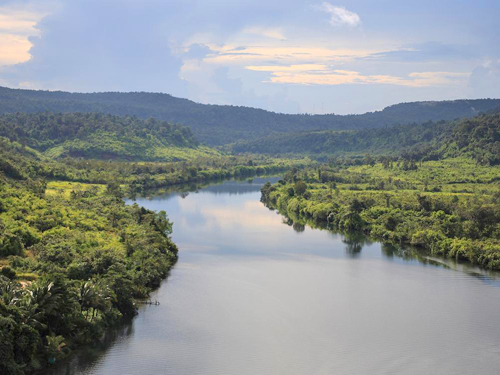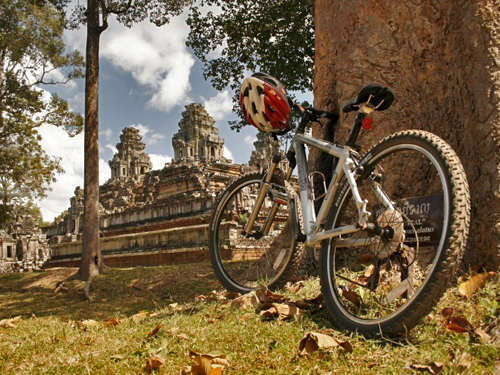In a country best known for its temples, Jane Dunford finds a floating ecolodge that's a gateway to a pristine environment.
I am, it's fair to say, in the middle of nowhere. This is the Tatai River, east of Koh Kong, in the southern reaches of Cambodia's Cardamom Mountains. Halfway between Bangkok and Phnom Penh, this is a pristine area of rainforest and coastal mangroves that barely features on the tourist trail.
The entire resort is waterborne - the brilliant idea of its Romanian owner Valentin Pawlik. You get here by boat, arriving at one of a series of floating wooden platforms. A central pontoon houses the bar, restaurant and library.
It's all very eco-friendly too, largely solar-powered and staffed mostly by locals - so you needn't have a guilty conscience. Move it away and there'd be little sign that it had ever existed.
Leaving the fireflies to party, I paddle slowly back to the lodge and feast on spicy shrimp and freshwater fish with coconut, cooked in banana leaves, before heading for a blissful night's rest, lulled to sleep by the gentle bobbing of water.
Most visitors to Cambodia flock to the revitalised capital of Phnom Penh further east and to the temples around Siem Reap in the north. This coastal region, part of the Koh Kong conservation corridor, is home to some of the country's most impressive natural sights.
Four Rivers, with its gorgeous setting on a bend in the river, is magical at all times of day - misty in the morning, glowing at sunset and prettily lit up after dark - and is as tranquil a place as you could wish for.
I spend much of my time here kayaking through the mangrove maze (spotting those fireflies and watching monkeys gather at the water's edge at dusk), swimming in the river from steps outside my tent and visiting waterfalls, where the pounding torrent gives a great back massage.
There are excursions into the jungle, led by a former poacher, to spot wildlife and visit villages and fruit plantations (overnight camping is a new option).
We stop at Koh Sra Lau, an island with one tiny fishing village, and wander around while women sit mending nets and offer us fried fish with tamarind sauce and papaya.
I'm keen to explore more, so the next day head to Chi Phat village and a community-based project started by conservation charity Wildlife Alliance, in the Southern Cardamoms protected forest.
There are several guesthouses but I choose a home stay on the outskirts of town with Chou and her young family, who sit underneath a stilted wooden house, a cow curled at their feet like a pet dog. A far cry from the luxuries of Four Rivers it may be but it's clean, comfortable and a great way to see everyday village life.
Chi Phat is all about outdoor adventure: you can trek or cycle into jungle and mountains for days at a time, sleeping in hammocks or rustic campsites, go bird watching, take boat trips or check out the nearby bat caves and an area dotted with mysterious, ancient burial jars.
I sign up for a 28-kilometre mountain bike tour to O'Malu waterfall. Crossing grassy plains and traditional farmland, we follow Lucky - a 23-year-old from the village who's been trained in everything from bike maintenance to wildlife spotting - up steep paths through the tangled jungle, with gibbons calling high overhead.
It's a challenging ride in parts but jumping into the cool pool at the base of the waterfall is a great reward.
Marvellous though the sights of Angkor Wat and the buzz of Phnom Penh are, I can't help thinking that it's Cambodia's more remote natural attractions that offer the best adventure.
Source: smh.com.au





0 comments:
Post a Comment